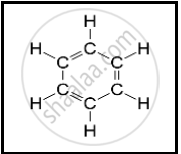Advertisements
Advertisements
प्रश्न
What is the difference between ionic compounds and polar covalent compounds?
उत्तर
Ionic compound:
- They usually have high melting points and boiling points.
- They are soluble in water. (NaCl)
- They often conduct electricity in a molten state.
- They are usually crystalline solids.
Polar covalent compound:
- Atoms do not have an equal distribution of shared electron pairs.
- They ionise in water.
- They are not electrically neutral.
- Bond is formed between dissimilar atoms such as H2O, NH3, HCl.
APPEARS IN
संबंधित प्रश्न
Butanone is a four-carbon compound with the functional group:
An element A has 4 valence electrons in its atom whereas element B has only one valence electron in its atom. The compound formed by A and B does not conduct electricity. What is the nature of chemical bond in the compound formed? Give its electron-dot structure.
What do you understand by polar covalent compounds?
The following structural formula belongs to which carbon compound?

Choose the correct answer from the options given below
Condition favorable for formation of a covalent bond is
Element A has 2 electrons in its M shell. Element B has atomic number 7.
Write equations to show how A and B form ions.
Covalent bonds can be single, double or triple covalent bonds. How many electrons are shared in each? Give an example of each type.
Taking MgCl2 as an electrovalent compound, CCl4 as a covalent compound, give four difference between electrovalent and covalent compounds
Name the anion present in the following compound:
When a barium chloride solution is added to a solution of compound B, a white precipitate insoluble in dilute hydrochloric acid is formed.
Two carbon atoms can always form one or two covalent bonds.
